Potrebujeme váš súhlas na využitie jednotlivých dát, aby sa vám okrem iného mohli ukazovať informácie týkajúce sa vašich záujmov. Súhlas udelíte kliknutím na tlačidlo „OK“.
ASTM D4914-08
Standard Test Methods for Density and Unit Weight of Soil and Rock in Place by the Sand Replacement Method in a Test Pit
Automaticky preložený názov:
Štandardné skúšobné metódy pre Hustota a Unit Hmotnosť zemín a hornín v mieste metódou Sand náhradné v teste Pit
NORMA vydaná dňa 1.3.2008
Informácie o norme:
Označenie normy: ASTM D4914-08
Poznámka: NEPLATNÁ
Dátum vydania normy: 1.3.2008
Kód tovaru: NS-29124
Počet strán: 13
Približná hmotnosť: 39 g (0.09 libier)
Krajina: Americká technická norma
Kategória: Technické normy ASTM
Kategórie - podobné normy:
Zemní práce. Hloubicí práce. Budování základů. Podzemní práce
Anotácia textu normy ASTM D4914-08 :
Keywords:
acceptance test, degree of compaction, density tests, field test, in-place density, pit test, quality control, sand replacement method, Backfill--testing, Calibrated sand, Calibration--soil/rock analysis instrumentation, Compaction measurement--soils, Control fraction, Density--soil/rock/related materials, Embankments, Excavation site, Mass, Ovens, Particle analysis--soil, Road fills, Rock materials/properties/analysis, Sand replacement method, Soil, Structural rock
Doplňujúce informácie
| Significance and Use | ||||||||||||||||||||||||||||||||
|
These test methods are used to determine the in-place density of compacted materials in construction of earth embankments, road fills, and structure backfill. For construction control, these test methods are often used as the bases for acceptance of material compacted to a specified density or to a percentage of a maximum unit weight determined by a standard laboratory test method (such as determined from Test Method D 698 or D 1557), subject to the limitations discussed in 1.4. These test methods can be used to determine the in-place density of natural soil deposits, aggregates, soil mixtures, or other similar material. Note 1—Notwithstanding the statements on precision and bias contained in this test method, the precision of this test method is dependent on the competence of the personnel performing it and the suitability of the equipment and facilities used. Agencies that meet the criteria of Practice D 3740 are generally considered capable of competent and objective testing. Users of these test methods are cautioned that compliance with Practice D 3740 does not in itself ensure reliable results. Reliable testing depends on many factors; Practice D 3740 provides a means of evaluating some of those factors. |
||||||||||||||||||||||||||||||||
| 1. Scope | ||||||||||||||||||||||||||||||||
|
1.1 These test methods cover the determination of the in-place density and unit weight of soil and rock using a pouring device and calibrated sand to determine the volume of a test pit. The word “rock'' in these test methods is used to imply that the material being tested will typically contain particles larger than 3 in. (75 mm). 1.2 These test methods are best suited for test pits with a volume from 0.03 to 0.17 m3 (1 to 6 ft3). In general, the materials tested would have a maximum particle size of 75 to 125 mm (3 to 5 in.). 1.2.1 These test methods may be used for larger sized excavations if desirable. However, for larger sized excavations, Test Method D 5030 is preferred. 1.2.2 Test Method D 1556 or D 2167 are usually used to determine the volume of test holes smaller than 0.03 m3 (1 ft3). While the equipment illustrated in these test methods is used for volumes less than 0.03 m3 (1 ft3), the test methods allow larger versions of the equipment to be used when necessary. 1.3 Two test methods are provided as follows: 1.3.1 Test Method A—In-Place Density and Unit Weight of Total Material (Section 9). 1.3.2 Test Method B—In-Place Density and Unit Weight of Control Fraction (Section 10). 1.4 Selection of Test Methods: 1.4.1 Test Method A is used when the in-place unit weight of total material is to be determined. Test Method A can also be used to determine percent compaction or percent relative density when the maximum particle size present in the in-place material being tested does not exceed the maximum particle size allowed in the laboratory compaction test (refer to Test Methods D 698, D 1557, D 4253, and D 4254). For Test Methods D 698 and D 1557 only, the unit weight determined in the laboratory compaction test may be corrected for larger particle sizes in accordance with, and subject to the limitations of Practice D 4718. 1.4.2 Test Method B is used when percent compaction or percent relative density is to be determined and the in-place material contains particles larger than the maximum particle size allowed in the laboratory compaction test or when Practice D 4718 is not applicable for the laboratory compaction test. Then the material is considered to consist of two fractions, or portions. The material from the in-place unit weight test is physically divided into a control fraction and an oversize fraction based on a designated sieve size. The unit weight of the control fraction is calculated and compared with the unit weight(s) established by the laboratory compaction test(s). 1.4.2.1 Because of possible lower densities created when there is particle interference (see Practice D 4718), the percent compaction of the control fraction should not be assumed to represent the percent compaction of the total material in the field. 1.4.3 Normally, the control fraction is the minus No. 4 sieve size material for cohesive or nonfree draining materials and the minus 3-in. sieve size material for cohesionless, free-draining materials. While other sizes are used for the control fraction (3/8, ¾-in.), these test methods have been prepared using only the No. 4 and the 3-in. sieve sizes for clarity. 1.5 Any materials that can be excavated with hand tools can be tested provided that the void or pore openings in the mass are small enough (or a liner is used) to prevent the calibrated sand used in the test from entering the natural voids. The material being tested should have sufficient cohesion or particle interlocking to maintain stable sides during excavation of the test pit and through completion of this test. It should also be firm enough not to deform or slough due to the minor pressures exerted in digging the hole and pouring the sand. 1.6 These test methods are generally limited to material in an unsaturated condition and are not recommended for materials that are soft or friable (crumble easily) or in a moisture condition such that water seeps into the hand-excavated hole. The accuracy of the test methods may be affected for materials that deform easily or that may undergo volume change in the excavated hole from standing or walking near the hole during the test. 1.7 These test methods use SI units with converted inch-pounds in parentheses. 1.7.1 In the engineering profession it is customary to use units representing both mass and force interchangeably, unless dynamic calculations are involved. This implicitly combines two separate systems of units, that is, the absolute system and the gravimetric system. It is undesirable to combine the use of two separate systems within a single standard. These test methods have been written using inch-pound units (gravimetric system) where the pound (lbf) represents a unit of force (weight). However, conversions are given in the SI system. The use of balances or scales recording pounds of mass (lbm), or the recording of density in lbm/ft3 should not be regarded as nonconformance with these test methods. 1.8 All observed and calculated values shall conform to the guidelines for significant digits and rounding established in Practice D 6026 unless superseded by this standard. 1.8.1 The procedures used to specify how data are collected, recorded or calculated in this standard are regarded as the industry standard. In addition they are representative of the significant digits that generally should be retained. The procedures used do not consider material variation, purpose for obtaining the data, special purpose studies, or any considerations for the user’s objectives; it is common practice to increase or reduce significant digits of reported data to be commensurate with these considerations. It is beyond the scope of this standard to consider significant digits used in analytical methods for engineering design. 1.9 This standard does not purport to address all of the safety concerns, if any, associated with its use. It is the responsibility of the user of this standard to establish appropriate safety and health practices and determine the applicability of regulatory limitations prior to use. For specific hazards statements, see Sections 7 and A1.5. |
||||||||||||||||||||||||||||||||
| 2. Referenced Documents | ||||||||||||||||||||||||||||||||
|
Podobné normy:
Historická
1.11.2013
Historická
1.11.2013
Historická
1.11.2013
Historická
1.1.2008
Historická
1.3.2014
Historická
1.7.2008
Odporúčame:
Aktualizácia technických noriem
Chcete mať istotu, že používate len platné technické normy?
Ponúkame Vám riešenie, ktoré Vám zaistí mesačný prehľad o aktuálnosti noriem, ktoré používate.
Chcete vedieť viac informácií ? Pozrite sa na túto stránku.


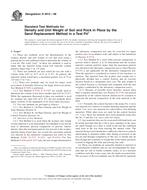
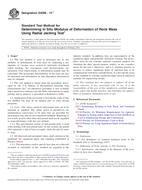 ASTM D4506-13e1
ASTM D4506-13e1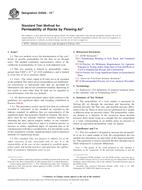 ASTM D4525-13e1
ASTM D4525-13e1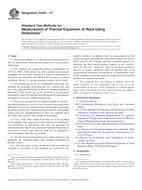 ASTM D4535-13e1
ASTM D4535-13e1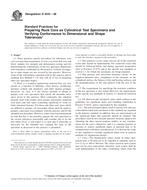 ASTM D4543-08
ASTM D4543-08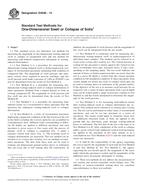 ASTM D4546-14
ASTM D4546-14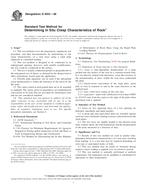 ASTM D4553-08
ASTM D4553-08
 Cookies
Cookies
